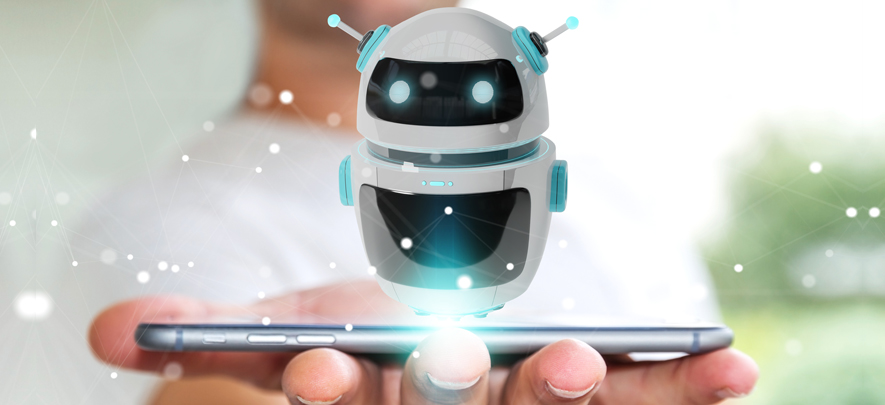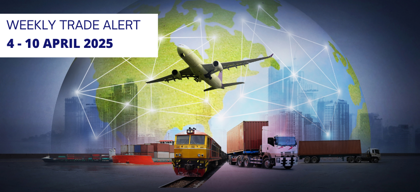A for Automation, B for Bots, C for Confusion…

Digital & Technology
293 week ago — 5 min read
Background: The word “Bot” often has a lot of negative human emotions attached to it, mostly due to incomplete information. Human response to hearing the word “bot” has become more Pavlovian (machines taking over the world) over a period of time as very few people have a complete understanding of the word. Hardik Gandhi sets the record straight!
Technically speaking, bots are automated programmes designed to perform specific tasks e.g. calculating your taxes based on your inputs, retweeting tweets from selected users, etc.
The types of bots have grown exponentially along with the range of tasks done by them. According to various reports, currently, bots are responsible for anywhere between 35-40% of the current web traffic.
Origins
The word ‘bot’ has different meanings in the real world and in the digital and in the interest of brevity here we will stick to the digital world. The word bot is short for robot. The word robot was first used to denote a fictional humanoid in a 1920 Czech play Rossum’s Universal Robot by Karel Čapek and it is his brother Joseph Capek who is credited for inventing the word. The word then slipped into the everyday language thanks to the science fiction stories and one of the most famous contributors was Isaac Asimov who coined the word Robotics.
Our research yielded no results to find out the exact event which led to the coinage of the word ‘bot’ however it is generally agreed that the term was first used in the 1960s and became more and more popular with time.
Also read: Technology & business trends: 2019 & beyond
The past
The very first bots (in the modern sense of definition) are traced back to the 1980s with the emergence of internet chat rooms to ensure the chatrooms would not close down due to inactivity. These were very first chatbots! Due to these bots even today the word bot generally evokes a response assuming it’s a chatbot.
A little later Web Crawlers were introduced. The most famous of them all is still active and way more powerful, maybe you have heard of it, it’s called Google Bot.
There were malicious bots (read BAD!) which were designed to install themselves on the computer unbeknownst to the user and record their keystrokes and send the collected data to a predefined destination. Another variety of bots could launch a DDoS attack by creating a botnet (multiple bots working together). No wonder bots evoke negative emotions.
And finally, there were gaming bots. A bot in gaming is used to refer to a character controlled by a computer. These bots were used to create RPG characters, counterstrike being one of the most famous examples.
The present
Over a period of time, the types of bots have grown exponentially along with the range of tasks done by them. According to various reports, currently, bots are responsible for anywhere between 35-40% of the current web traffic.
Many companies have introduced chatbot interfaces for customer service, improving the turnaround time for customer queries. These chatbots have very limited capabilities and can only respond to certain queries and responses. All the digital assistants which you see around you like Alexa, Siri and Cortana are nothing but bots. Recommendations given on e-commerce websites like Amazon & Flipkart are generated by (right again!) bots!
Also read: 10 reasons why your business should adopt IoT
The future
As the cost of the automation keeps reducing by the day the future of the automation looks exciting. One WEF report estimates that in manufacturing 48% of the time spent on physical and manual tasks will come down to 35%. According to a McKinsey report, the sectors which will benefit the most in India are manufacturing & retail. The winners in these sectors will be those who create organizations with the workforce empowered by automation, real-time data and analytics.
Bots have evolved from a mere term to something that has the capability of changing the face of business and they there are here to stay. Since, there is no escaping bots, its prudent to take a good look at your industry and company and think out of the box on how bots can help propel your business further.
Also read: How can SMEs adopt digital transformation?
Image source: shutterstock.com
To explore business opportunities, link with me by clicking on the 'Connect' button on my eBiz Card.
Disclaimer: The views and opinions expressed in this article are those of the author and do not necessarily reflect the views, official policy or position of GlobalLinker.
Posted by
Hardik GandhiZvolv - a cognitive workflow automation platform to streamline people/data centric collaboration processes, in a matter of days, with no developer dependence.
View Hardik 's profile
Other articles written by Hardik Gandhi
Organised chaos: A pipe dream?
307 week ago
Business site selection: The science behind it
312 week ago
Most read this week











Comments
Share this content
Please login or Register to join the discussion